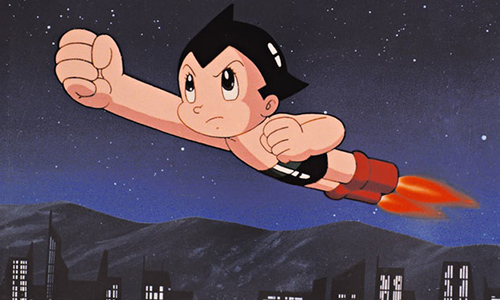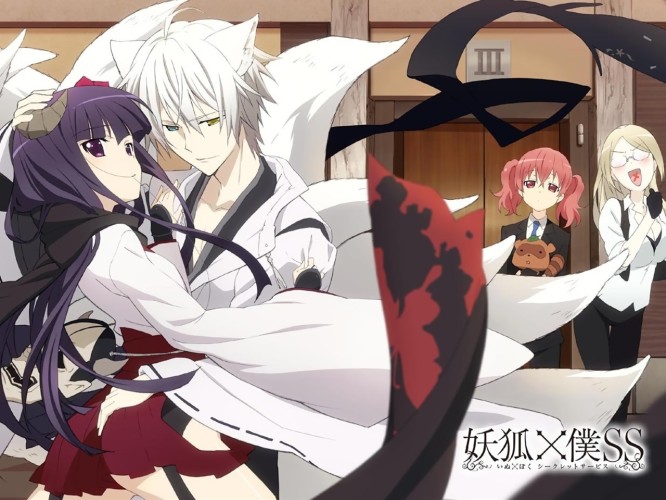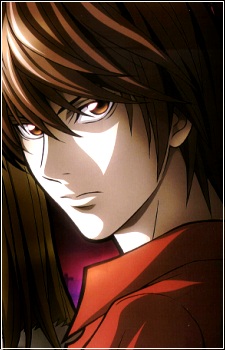

Nakano Broadway occupies a special position in the Tokyo public consciousness, as a place showcasing a different brand of otakuism compared to that of of Akihabara or Ikebukuro. Less commercialised, flashy, less intense, more sophisticated and more directed towards the ‘collector’ rather than the casual, awkward teenager, Nakano Broadway represents what manga and anime used to be – a specific brand of sabukaruchaa – subculture. At the end of the relatively unassuming shoutengai Sun Mall, about four minutes by foot from the north entrance of JR Nakano station, lies Nakano Broadway, which most likely won’t give you any revelatory ‘woow’ experience. Rather, people who have listened to their friends hype this place up into the clouds might be prone to disappointment. But wait, there’s more to it that meets the eye. But first, some history.
Mandarake Information:
| Location | 5 Chome-52-15 Nakano, Tokyo 164-0001
[googlemaps https://www.google.com/maps/embed?pb=!1m14!1m8!1m3!1d3239.7123363927763!2d139.66717247381894!3d35.7086959051137!3m2!1i1024!2i768!4f13.1!3m3!1m2!1s0x0%3A0xe9aa9d88c43197d5!2z5Lit6YeO44OW44Ot44O844OJ44Km44Kn44Kk!5e0!3m2!1sja!2sjp!4v1448915340606&w=400&h=300]
|
|---|---|
| Subway: | Nakano Station at JR Chuo Line, Sobu Line and Tozai Subway Line |
| Cost of Admission | free |
| Hours | Depends on store, usually 12:00-20:00 |
| Official Website (If available) | http://www.nbw.jp/index_e.html |
Mandarake A Little History

Originally an apartment complex with an exclusive shopping mall, Nakano Broadway got its name from Waseda Dori that lies outside its northern gate. It was by coincidence that this unassuming area rose to prominence as one of Tokyo’s important cultural centres. In the 80s and early 90s, various factors led to many of the small shops that had been concentrated in the area north of the Sun Mall shoutengai going out of business, and as more and more shops closed, the area was left largely deserted, devoid of people. Nakano’s ideal location along the Chuo-line with its distinct ‘Chuo line culture’, as well as it having several universities and animation studios in its immediate vicinity, gave good conditions for the formation of what was to become a new centre of Japanese popular culture. Just as Koenji, which is walking distance from Nakano, had become an important place for Japanese underground music years earlier, Nakano was to assume a similar position with regards to manga, largely thanks to one guy and his one shop. Taking advantage of the aforementioned bad economic situation, as well as a system that let shop owners buy stores instead of renting them, manga artist Furukawa Masuzo established a bookstore that later would become one of the pillars of otaku culture: Mandarake. Opened in 1980, Mandarake was quite a rarity for its time, as there weren’t many shops specialising in used comics. Unique was also the fact that it, in offering both exclusive collector’s items to collectors as well as cheap second hand manga to more casual readers, catered to many different crowds, making it hugely popular. As Mandarake expanded, others wanted to take advantage of a good business environment as well as the aforementioned lucrative shop system, and as a result, Nakano Broadway saw various other specialty shops opening. Steadily growing and expanding throughout the 90s, today’s Nakano Broadway gradually took shape.

Mandarake First glance
The first thing you’re likely to experience is confusion, as the first escalator you encounter leads you not up to the second floor as any normal person would assume, but rather the third one. I always get lost, even with a map – the layout of the building is like something from a Kafka novel. Luckily, there are floor maps, and on the first floor you’re recommended to grab a pamphlet in your language of choice, be it Japanese, English, Chinese, or Korean. I could’ve written a floor guide, but Nakano Broadway isn’t really meant to be browsed through methodically, you’re supposed to get lost in the narrow gates, forgetting both the time and where those 10,000 yen bills from your wallet went … The important thing is that the main action happens on the second and third floors; depart from either the aforementioned escalator or the stairs and you’re good to go.

Mandarake
As one should expect, Mandarake is both the physical and the spiritual centre of Nakano Broadway, and by far occupies the largest number of shops inside. As one of its slogans goes, ‘If you can’t find it at Mandarake, you can’t find it anywhere’. And that’s most certainly true, be it old Toho-godzilla posters (2nd floor), antique robots (4th floor), miniature cars (2nd floor), anime cells (4th floor), anime music (2nd floor), Doujinshi (2nd floor), vintage Astroboy (4th floor) – you get the picture. On the third floor is one of my favourite Mandarake stores, ‘Henya’: after you make your way through a gate consisting of traditional Japanese torii (gates found at shinto temples), you’re greeted by a life-size Choujin Baromu (apparently some old super hero) with a price tag of 850,000 yen, and as you walk around on the equal-parts tacky and fascinating 1960’s futuristic neon floor, your eyes will be blinded by the sheer amount of old toys and figurines. Although no aficionado of that sort, I felt my hand unconsciously moving towards my wallet upon seeing Godzilla, Tiger Mask, and Robby the Robot from Forbidden Planet, as well as other Showa-era rarities. Call me boring, but I usually spend most of my time at the large second-hand manga store on the third floor, which bears the poetic name of ‘Main Store’ and ‘Main Store 2’. This is one of my absolute favourite spots for manga in Tokyo: Not only is it reasonably cheap, with even most obscure and hard-to-get titles prized under 1,000 yen, the selection is also excellent. If you’re in trouble, the staff are also always very helpful, and there’s usually at least one English-proficient person, for those of you not yet confident in the language of the land of the rising sun. If you’re a Tokyo resident and wanting to get rid of some old, dust-collecting comics – maybe before your family is visiting you for Christmas? – you can head over to the buy-back stand on the 3rd floor. As far as prices go I am not really sure, but assume that they will pay more than book-off, given that you have something noteworthy to offer. The outside decor of the main store perfectly sets the mood with its 80s industrial Hong Kong steampunk theme – Nakano Broadway has been compared to the infamous ‘Kowloon Walled City’ (which also by the way is the theme for an awesome game center Kawasaki Warehouse) – reminding us that, even though Mandarake might be a chain store now, this is its original incarnation, where it all started – the centre of Tokyo’s ‘otaku subculture heaven’.

Apart from Mandarake:
Even though visiting all the Mandarake stores will take you more than a whole day’s worth of exploring, there are also other places worth visiting in Nakano Broadway. A comprehensive list would be too long for this article, so what follows are some severely biased selections. If you can’t find the cells you’re looking for at Mandrake, you can head to Anime World Star, a small shop specialising in celluloids from movies. I admittedly haven’t visited this particular store, but rumour has it that it’s possible to make a bargain for less than 1,000 yen. Rather than wasting your money on a sub-par meal at that robot restaurant in Shinjuku, you could also consider investing in a cute, tiny vintage machine at Robot Robot on the 3rd floor. Although you probably won’t find Japan’s new darling Pepper here, most of the fictional robots from Japan and abroad can probably be found in this small shop. We can’t finish without mentioning Zingaro, which, if we want to go all cheesy, can be said to put the culture into the subculture that Nakano Broadway represents. Owned by Murakami Takashi, an acclaimed Japanese artist whose instantly recognisable happy flowers (or artwork for Kanye West’s third album), Zingaro consists of no more than five galleries, where especially pixiv Zingaro is of special interest to the anime fan. The gallery regularly hosts manga and anime-related exhibitions, all free of charge. And should you be tired after a day’s worth of guilty pleasure shopping, or simply want a place to sit down and play with your miniature robots, Bar Zingaro is the place for that, with it’s delicate Scandinavian interior and flower paintings. If the noisy Akihabara just leaves you exhausted, fed up with that mass-produced crap that more than often is the case nowadays, you can turn back to JR Akihabara Station, take the Chuo line to Shinjuku, change for either the Sobu line or the Chuo line, and get off at Nakano, and you will have everything your nostalgic, a little bitter, but true otaku heart desires. Nakano Broadway is not the place to go if you’re looking for new stuff, but if you are, pretend to be, or want to become an enthusiast, you will want to be right here.



































































































































 ' anime='
' anime=' ']
']

 ' anime='
' anime=' ']
']

 ' anime='
' anime=' ']
']

 ' anime='
' anime=' ']
']

 ' anime='
' anime=' ']
']

 ' anime='
' anime=' ']
']

 ' anime='
' anime=' ']
']

 ' anime='
' anime=' ']
']

 ' anime='
' anime=' ']
']

 ' anime='
' anime=' ']
']

























